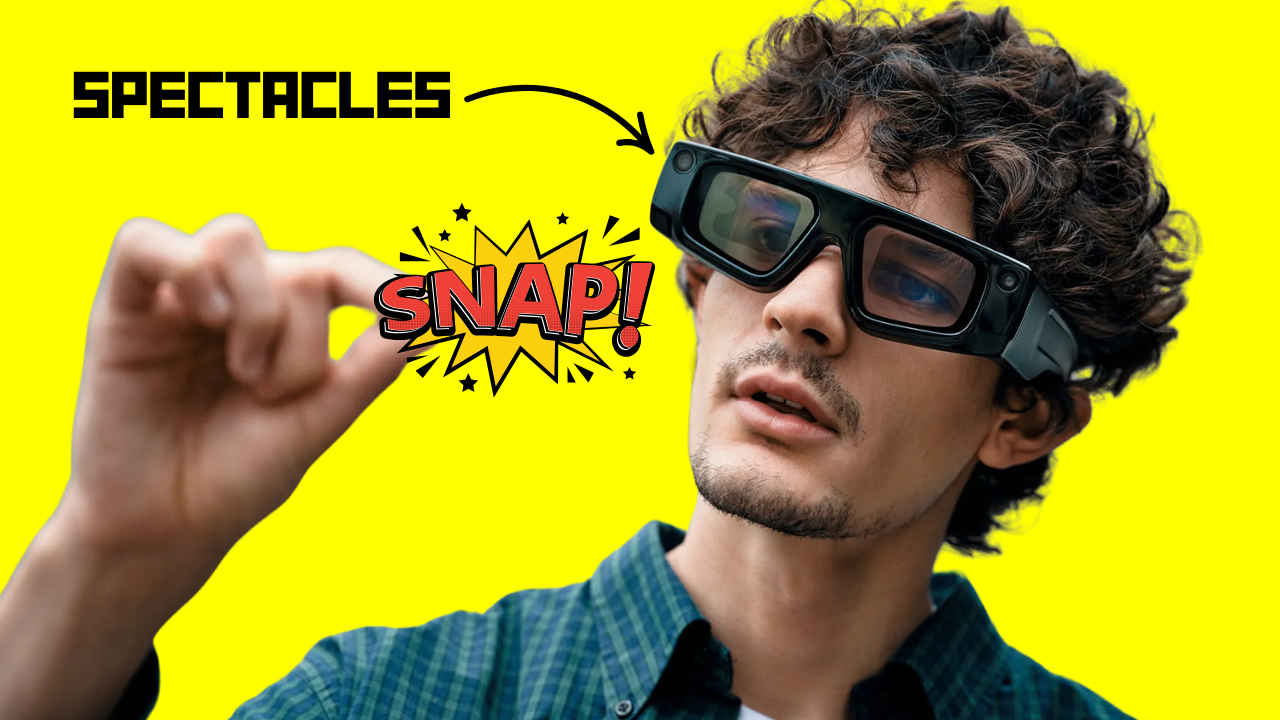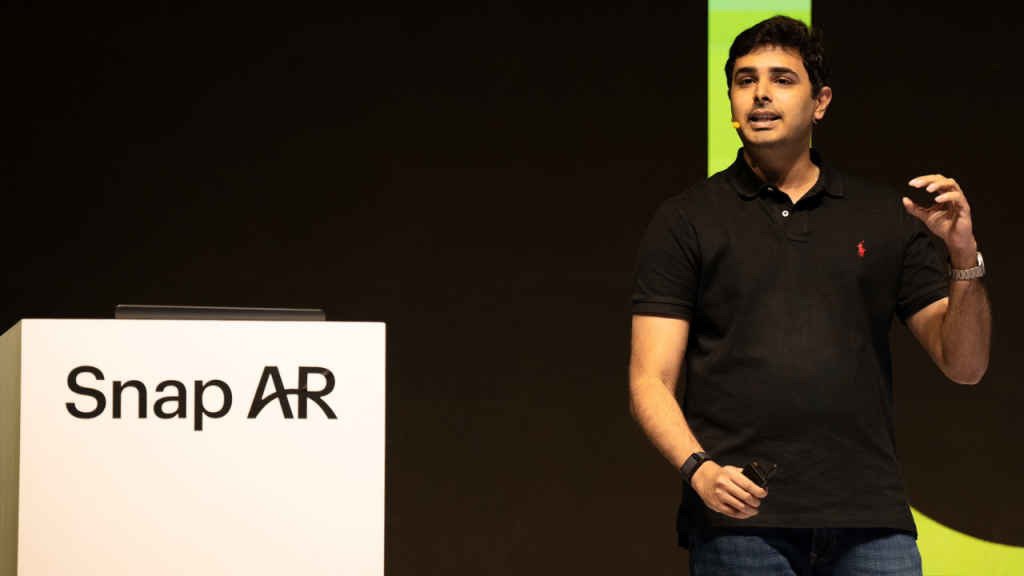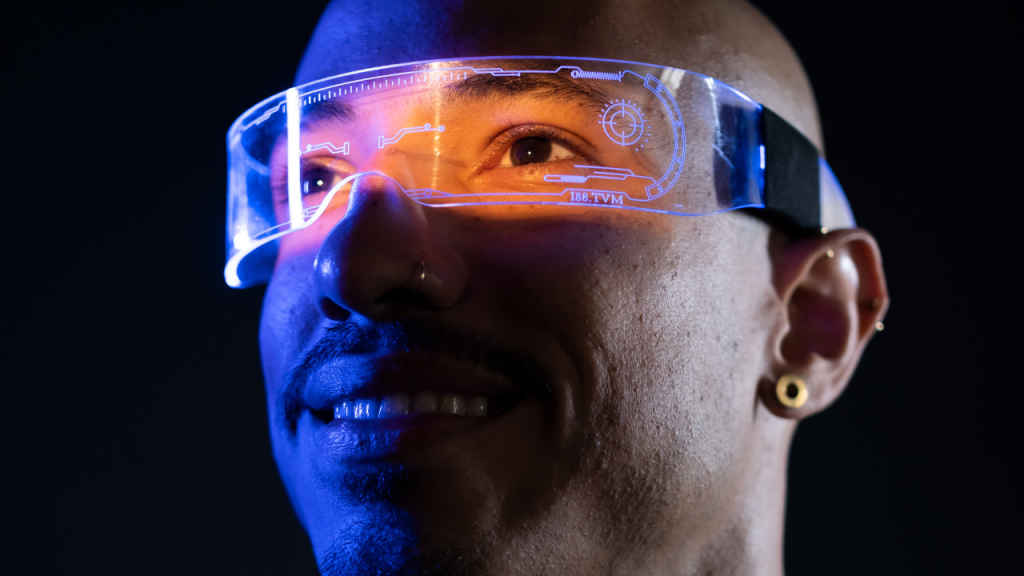Snapchat to Spectacles: How AR’s powering Snap’s India growth story

“It’s all about unlocking creativity and self-expression, changing how we see ourselves and the world,” says Srivatsan Jayashankar, Head of AR Partnerships at Snap Inc. In that one concise remark, he captures the essence of the company’s push into India’s dynamic AR or augmented reality ecosystem – which is nothing but bubbling with creative energy. Combine that with ambitious young developers and a culture of visual communication like few others on the planet, and Snap Inc – the parent company of Snapchat – has nothing but struck gold.
I caught up with Srivatsan at Snap Inc’s second annual India AR Day in Mumbai, an event that felt more like a festival of playful Lenses and hyperlocal experiences rather than your typical corporate summit. With the current tech discourse saturated with talk about the next big tech wave or which app might dominate tomorrow, Snap’s approach seemed different – it’s all about empowering local creators to build AR experiences that resonate in real ways, with real people, across India and the subcontinent’s diverse cultures and communities.
Also read: Snap unveils next gen Spectacles, says India biggest creator of lenses globally
Snap sees India as the next frontier of AR, according to Srivatsan Jayashankar, and they’re working to ensure that AR doesn’t just remain the domain of niche tech enthusiasts, but something that’s integral to daily life.
Building AR that reflects India
“India is a particularly interesting market for us. Our early investment here has led to huge adoption, especially with Gen Z,” Srivatsan tells me, referencing data that Snap’s dug up showing how Indian Gen Z loves to express themselves with filters, stickers, GIFs, and short videos. Indeed, BCG Snap research suggests “four out of five Gen Z individuals in India use images, GIFs, and other immersive visuals to connect.”
That love for visual expression is exactly the sweet spot Snap is aiming for, building on its roots as a “camera company” that first became famous for ephemeral snaps and playful Lenses. Only now, the company’s going all-in on more advanced AR, bridging the gap from dog-face filters to real-time object recognition, brand try-on experiences, and hyperlocal geofilters.

A huge part of this exercise, Srivatsan explains, is making sure AR has local flavour and doesn’t feel like an import from a distant Western lab. “We really believe that AR should be a way to celebrate local culture and let people tell their own stories,” he says. “We’ve introduced AR Lenses for local festivals like Gudi Padva, Pongal, Durga Pooja, and Janmashtami.”
For a culturally rich country where every region has its own celebrations – from Onam in Kerala to Bhogali Bihu in Assam – AR can be a fun, expressive medium to highlight those moments. Srivatsan notes that Snap has rolled out more than 500 hyperlocal geofilters across the country, letting folks in different cities or towns see unique designs relevant to their own cultural identity. “We want AR to be relevant and meaningful in people’s lives,” he remarks, and the best way to do that is to meet people where they already are – heightening celebrations, community gatherings, and festivals.
And vindicating Snap’s decision to pay greater attention to the Indian market is visible in the following milestone, that India’s AR Developer community has grown by over 50% in two years, now boasting the highest number of AR Lenses globally. That’s a bold claim, but Srivatsan is good for it. “We’re putting a lot of effort into expanding AR adoption across the country, especially focusing on Tier 2 and 3 cities,” he says. “In 2024, we hosted 120+ meetups and connected with over 6,000 AR developers.”
Also read: Android XR: 5 cool things about Google’s new AR-VR operating system
These workshops and meetups aren’t happening only in Bangalore or Mumbai. Think Surat, Coimbatore, Rajkot, Thiruvananthapuram, Gwalior – places that often get overlooked in the big-city-dominated tech narrative. Snap’s idea here was simple – if you empower local creators with Lens Studio training, show them how to build interactive experiences, you spark a multiplier effect. They bring that knowledge back home, start building for local businesses, local cultural events, and so on.

“One of the ways we’re doing this is by bringing Lens Studio training directly to creators,” Srivatsan adds. Snap’s also teaming up with educational institutions like K.J. Somaiya, Pearl Academy, and Loyola College to ensure budding developers gain the skill sets needed for tomorrow’s XR economy.
One revelation for Snap has been the explosive creativity beyond the obvious metro hubs. “What’s especially exciting is seeing AR expand beyond just entertainment,” Srivatsan notes. “We’ve learned that India’s AR community is evolving faster than we ever anticipated.” From small dev shops in Tier 3 cities to ambitious amateurs testing the waters, Snap sees in them not just novelty but actual domain expertise – some are building solutions for local businesses, education, or even social causes.
Snap’s strategy? Cultivate and educate them on monetization paths and commercial viability. It’s not enough to build a neat AR filter; can you pitch that to a brand, or adapt it for a city-wide festival? That’s how an initial hobby becomes a living for many creators in the Snap ecosystem.
Meet Snap’s Spectacles with AR built-in
If Lenses on a phone are one side of Snap’s AR vision, Spectacles are the other – a hardware manifestation of real-world immersion. “Our fifth-generation Spectacles are a huge step forward,” Srivatsan says. “These new, see-through, standalone AR glasses enable you to use Lenses and experience the world with friends in completely new ways.”

Keeping them lightweight and comfortable enough that you’d actually wear Spectacles in public was the number one design goal. Srivatsan points out “they weigh only 226 grams – less than half the weight of a typical VR headset.” That’s no small feat, given they pack advanced imaging, Snap OS, and a dual-system-on-chip architecture to power AR experiences in real time. Battery life, connectivity, and comfort remain ongoing challenges for all AR eyewear, but Snap’s aiming to lead by example, bridging phones and glasses through intuitive features like screen mirroring and phone-based controllers.
At the Snap AR Day, I took the Spectacles for a spin, trying out AR games and filter-based activities developed by both Indian and other developers. The experience was quite refreshing and exciting at the same time, giving me a small taste of tether-free, hands-free spatial computing that we’re all going to enjoy very soon.
Also read: Meta Orion AR glasses make Apple Vision Pro look clunky
But let’s face it – while fun Lenses for festivals might get people hooked, the next wave is monetization – especially in a market as e-commerce-crazy as India. “Snap’s AR technology is a game changer for brands,” says Srivatsan, highlighting augmented try-ons and immersive campaigns as ways for retailers to differentiate.
He emphasises a few success stories. “Ajio, Myntra, and Coca-Cola are using AR to create interactive and memorable shopping experiences,” says Srivatsan. Another example: Britannia’s “Croissant Pronunciation Challenge,” which gamified the brand’s marketing around a simple question of how to say “croissant.” JioCinema’s tie-up for the IPL brought live score overlays. “Hindustan Unilever and Mindshare used Snapchat AR to bring Lakmé’s Rouge Bloom Collection to life with virtual makeup try-ons,” Srivatsan adds. Each time, the brand sees higher engagement, and for consumers, it’s far more interactive than passively scrolling through images.
Future of AR in India and beyond
Finally, I asked Srivatsan to peer into the future – what’s AR going to look like down the line, and how does Snap keep evolving in India’s dynamic market? “Looking five to 10 years down the line, we think Artificial Intelligence is going to be a huge part of how AR evolves in India, helping to build and supercharge the experiences of the future,” he tells me. Basically, if you think AR is just about face filters now, imagine layering in advanced AI that can interpret the environment, personalize content on the fly, and enable instant creation of new Lenses.

He name-drops Snap’s new Spectacles again, emphasising “they’re see-through, standalone AR glasses… letting people experience the world in entirely new ways by overlaying digital content.” Over time, AI will “supercharge every creative person’s ability to bring their imagination to life.” Instead of building a Lens in days or weeks, maybe you just type in a quick prompt and watch the AR environment render itself.
“We definitely expect Snap to continue playing a key role in shaping that future, empowering creators and making AR more accessible to everyone,” Srivatsan affirms. It’s a vision of a more collaborative, real-time, visually oriented internet, bridging phone, glasses, and who knows what else. AR is no longer a fad. It’s a mainstream channel for communication, culture, and commerce – and Snap’s forging a path to make it happen at scale – here in India and beyond.
Also read: Meta’s AR push makes Apple rethink its headset strategy: Here is what you should expect
Jayesh Shinde
Executive Editor at Digit. Technology journalist since Jan 2008, with stints at Indiatimes.com and PCWorld.in. Enthusiastic dad, reluctant traveler, weekend gamer, LOTR nerd, pseudo bon vivant. View Full Profile




